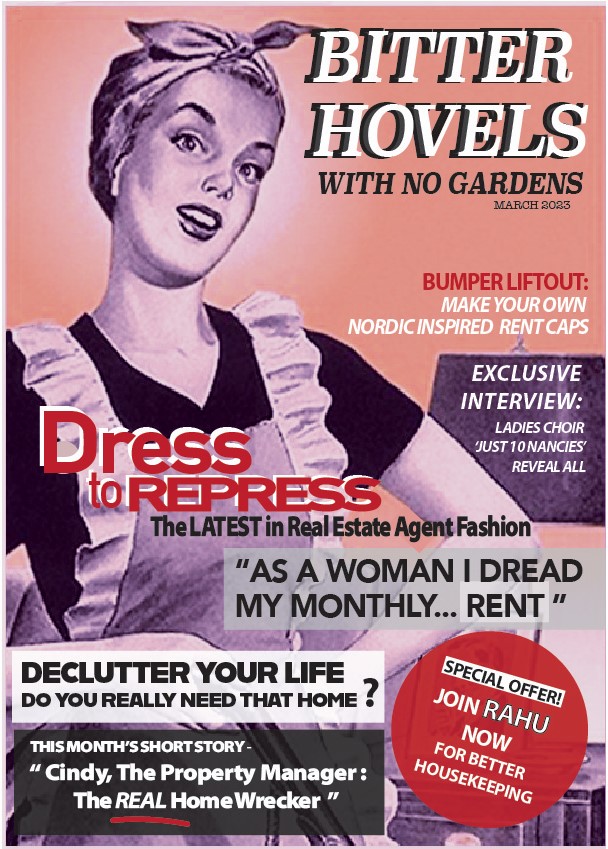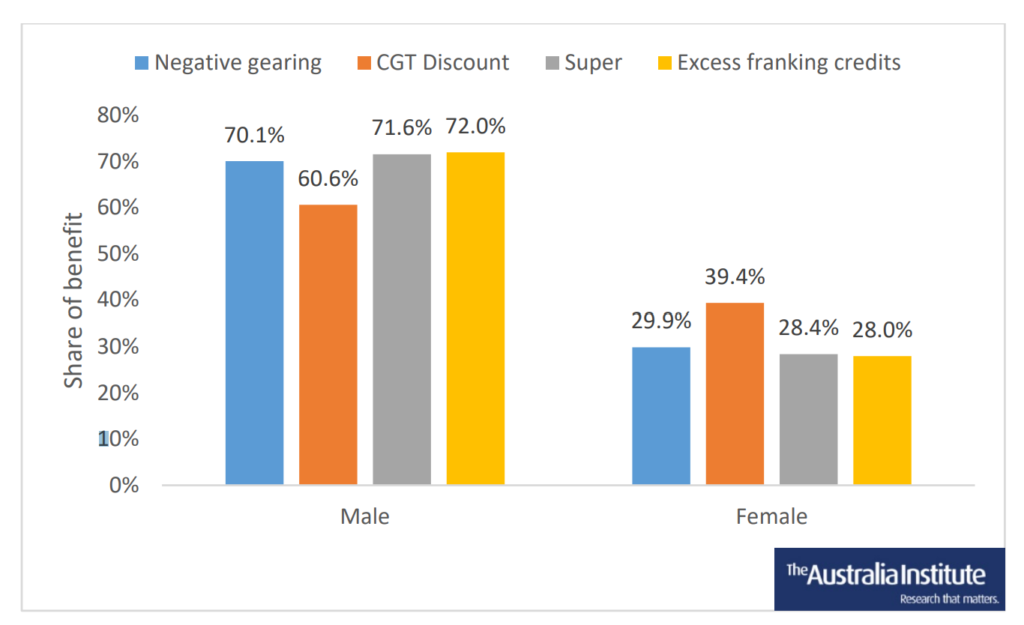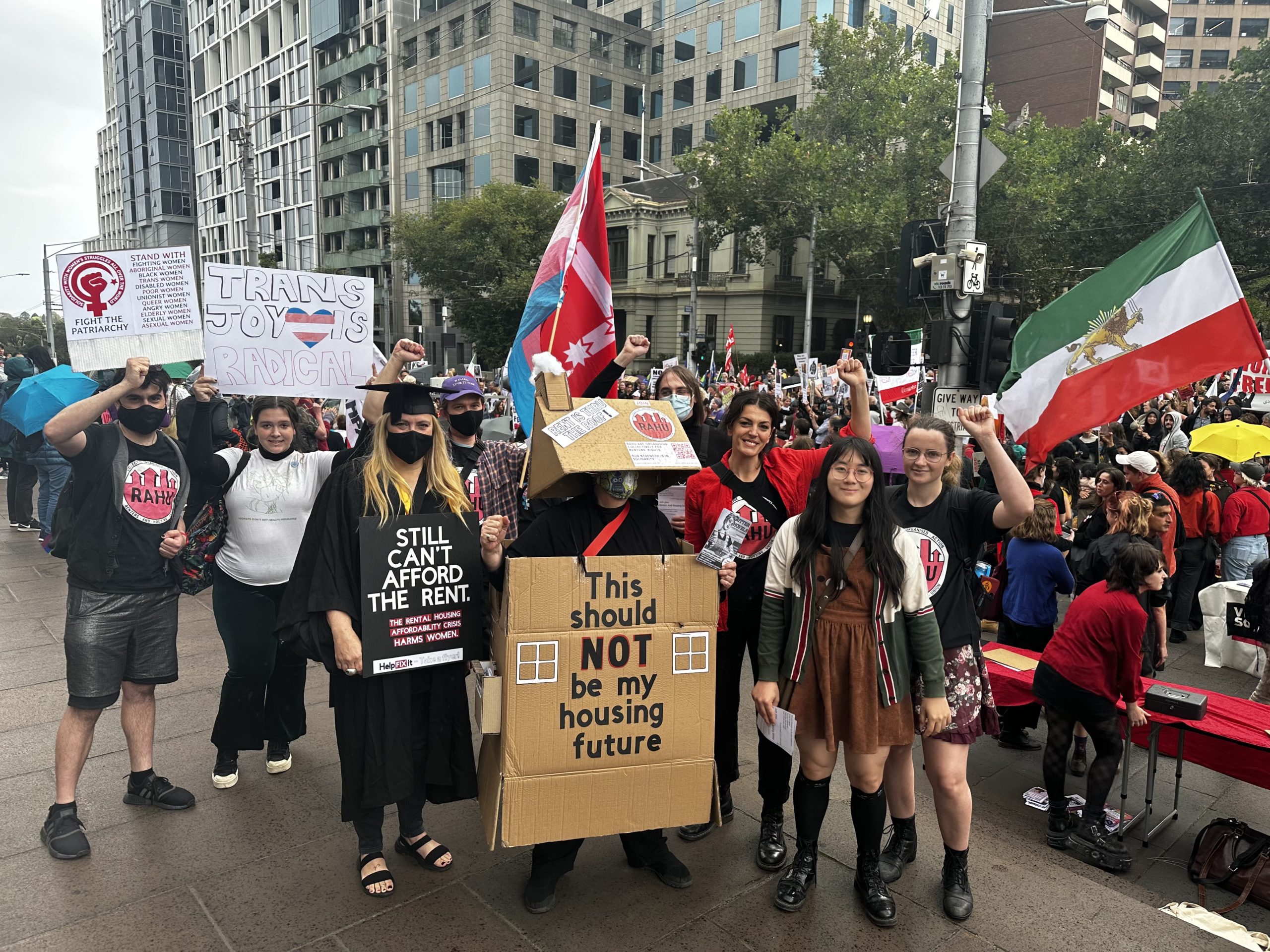Calling out the real homewreckers; why women aren’t at home in Australia.

“Adequate housing is a human right enshrined in international human rights law. Failing to recognise, protect, and fulfil the Right to Adequate Housing results in the violation of a plethora of fundamental rights including the Right to Work, Education, Health, and Security.” [1] This right is owed to every person, “regardless of age, gender, race or income level — and is the foundation for all human development, well-being and survival….” [2]
“As it functions in Australia, homeownership has transitioned from a wealth spreading to a wealth concentrating institution,” [3] further exacerbating and entrenching the gap between the haves and the have-nots, with women disproportionately impacted by this, and other forms of, housing injustice.
Women accrue a lifetime of inequities, such as the impacts of the gender pay gap and lack of superannuation, family and domestic violence, unpaid care work and time out of paid employment, and lower rates of home ownership, that sees them bear the brunt of Australia’s unjust housing system. [4]
As such issues around housing, and home, have been central to women’s rights movements, both at home and abroad.
The private rental market in particular has always had a ‘women’s problem’ as the very conditions feminists have sought to redress: inequality, injustice, unfairness and inequity are the same conditions best suited to maximise profit for landlords, realestate agents and others.
Like most of the world, in Australia, the majority of residential property investors and therefore landlords continue to be men. [5] They also reap the greatest benefit from tax concessions worth $60.103 billion per year, including negative gearing and capital gains tax, that directly increase their capacity to not only build wealth, but that has also shaped much of the housing system in Australia, including directly contributing to the ‘housing affordability crisis’.
For example, men receive more than $1.50 of benefit for every $1 women receive for capital gains tax concessions; and more than $2 for every $1 for negative gearing, most of which in Australia is derived from investments in real estate. [6]

Here are a few other home truths to illustrate the negative impacts the hoarding of homes for profit causes; and of the consequences of the failure of all levels of government to adequately protect and regulate to ensure everyone has safe, secure, stable, healthy, appropriate, affordable housing, including housing options outside the private rental market.
Housing makes up 55.6% of household wealth. (RBA September 2021) Women without opportunities and resources to buy residential property therefore have greatly reduced prospects for their longer-term financial wellbeing. Divorced females are more likely to never re-enter homeownership and suffer prolonged financial hardship than divorced males. [7, 8]
For 32% of the Australian population who rent, ¾ are currently living in financial stress caused in large part by skyrocketing rents in one of the least regulated of comparable rental markets. [9, 10] The cost of living crisis is for many primarily a cost of housing crisis. Older “tenants in Australia have the highest rate of relative poverty in the entire Organisation for Economic Co-operation and Development (OECD).” [11]
42% of renters over 65 yrs are in poverty; compared to 6% for homeowners without a mortgage. [3]
Women 55+yrs are the fastest-growing group to experience homelessness, growing 31% between 2011 and 2016. 240,000 women aged 55 or older and another 165,000 women aged 45-54 are at risk. [12]
49 000 women face homelessness each night [13] 41% of people using homelessness services also sought help for family and domestic violence [14]. The majority of whom were single mums caring for some of the more than 15 800 homeless children aged 12 years and younger [14].
Twice as many 15-24yr old females access homeless services than males the same age. Most need help because of a housing crisis and family and domestic violence. [15] More than half of the women seeking support from specialist homelessness services are turned away due to the overwhelming and increasing demand on these services. [15]
Due to a lack of public housing and affordable housing many women remain in or return to domestic violence relationships. There are currently more than 500 000 people on public and social housing waitlists.
Nationally, 49% of residents in social and public housing are 40 years or older, the majority of whom are women. Like other low-income households, poorly designed, maintained, and ageing housing stock, means many in public housing “live in homes that are dangerously hot in summer and freezing cold in winter.” [16] The effects of climate change will make this, and other similarly poor quality housing in the private rental market, even more unbearable, and in many instances uninhabitable.
And lastly, in a recent review of literature on gender, health and housing, Vásquez-Vera, Fernández, and Borrell found women, trans and non-binary people, have poorer health outcomes directly related to housing than men.
Women experience “(w)orse mental health outcomes, such as increased anxiety, generalized anxiety disorder, stress, depression, major depression, emotional distress, sleep disorders, impairment in daily tasks, and suicide due to lack of social support…. In terms of physical health, (there is)… a higher probability of hypertension, worse recovery from breast cancer, poorer self-perceived health, higher prevalence of chronic diseases, higher probability of respiratory diseases and associated symptoms, worse birth outcomes… fatigue, psychosomatic symptoms, skin problems, and muscle pain. Finally, it was also associated with a higher prevalence of sexual violence and physical violence.” It should be noted there is very little research that has moved beyond binary notions of sex and gender, and therefore little data on health and housing for this portion of the population. However, the research available pointed to trans and non-binary people’s experience of housing and health negatively impacted by the effects of stigma and discrimination and high rates of housing insecurity. [17]
These, and the multitude of other, inequities that make up the Australian housing system are entirely preventable, and the detrimental impacts and harm they cause avoidable. The current housing crisis is unjust and unjustifiable, oppressing those with the least and greatest need in the name of greed. The remedies are well-known and are tried, tested and true: this work has already been done.
So if Bitter Hovels With No Gardens is not the no lifestyle magazine you’d like to have on your, or anyone else’s coffee table, join RAHU: because we know ‘housekeeping’ is more difficult than ever.
Renters rights. Regulation. Rent caps. Right to housing.
Renters And Housing Union is the largest member-run Union of renters in Australia formed as a response to the COVID19 crisis. We organise for safe and secure housing for renters and people in precarious housing of all tenancy types through education, advocacy and eviction defence.

- UN-Habitat. Housing Rights. 2023 2023 [cited 2023 3 March]; Available from: https://unhabitat.org/programme/housing-rights.
- Singh, D.S., et al., Children, cities and housing: Rights and priorities, Discussion Paper. 2022, UN-Habitat.
- Maclennan, D., J. Long, and C. Leishman, Housing Wealth And The Economy: All That Glitters Is Not Gold. 2021: UNSW City Futures Research Centre.
- Petersen, M. and C. Parsell, Homeless for the first time in later life: An Australian study. Housing Studies, 2015. 30(3): p. 368-391.
- Owen, E., A. Russell, and K. Davidson, Women and Property: One year on Australia and New Zealand. 2022, Australia, CoreLogic.
- Grudnoff, M. and E. Littleton, Discussion Paper: Rich Men and Tax Concessions: How certain tax concessions are widening the gender and wealth divide. 2021, The Australia Institute: Canberra, Australia.
- André, S., C. Dewilde, and R. Muffels, What do housing wealth and tenure have to do with it? Changes in wellbeing of men and women after divorce using Australian panel data. Social science research, 2019. 78: p. 104-118.
- Dewilde, C. and H. Stier, Homeownership in later life–Does divorce matter? Advances in Life Course Research, 2014. 20: p. 28-42.
- RAHU, Renters and Housing Union: Pricing Us Out of a Home: Issues with private rental housing and recommendations towards housing stability. 2023, Senate Select Committee on the Cost of Living.
- Rolfe, S., et al., The role of private landlords in making a rented house a home. International journal of housing policy, 2023. 23(1): p. 113-137.
- Chomik, R. and S. Yan, CEPAR research brief: Housing in an ageing Australia: Nest and nest egg? 2019, UNSW Sydney, NSW.
- Beer, A., et al., An effective homelessness services system for older Australians. 2019, Australian Housing and Urban Research Institute Limited: Melbourne.
- Koukoulas, S., Issues relating to the economic security for all Australian women–a white paper (June 2018) update. 2020.
- Economics, E., Nowhere to go: the benefits of providing long-term social housing to women that have experienced domestic and family violence. 2021, Report prepared for Everybody’s Home: Melbourne, Victoria.
- Warburton, W.A., M. Papic, and E. Whittaker, Heterogeneity among homeless Australian women and their reasons for homelessness entry. International Journal of Environmental Research and Public Health, 2022. 19(15): p. 8909.
- Daniel, L., et al., Warm, cool and energy-affordable housing policy solutions for low-income renters. AHURI Final Report, 2020.
- Vásquez-Vera, C., A. Fernández, and C. Borrell, Gender-based inequalities in the effects of housing on health: A critical review. SSM – Population Health, 2022. 17: p. 101068.
